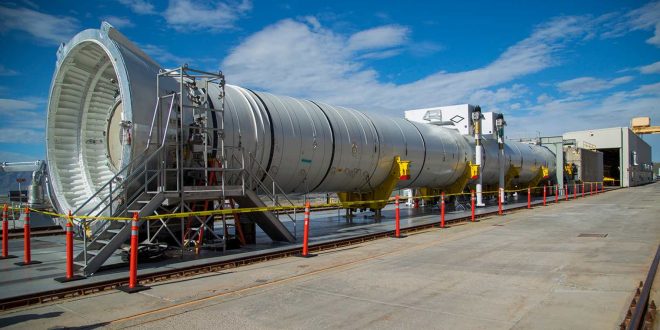NASA will subject the booster for a Boeing-built rocket to a second ground qualification test on June 28 at an Orbital ATK facility in Utah.
This is the last time the booster will be fired in a test environment before the first test flight of SLS with NASA’s Orion spacecraft, known as Exploration Mission-1 (EM-1), in late 2018.
NASA Television will air a NASA Social event that provides the latest updates and background on SLS and Exploration Mission-1 at 3:30 p.m. Monday, June 27, and will air live coverage of the booster test June 28 beginning at 9:30 a.m.
Following the test, NASA will hold a media teleconference at 11 a.m. to discuss initial assessment of the booster firing. The teleconference participants will be:
- Bill Gerstenmaier, associate administrator for Human Exploration and Operations at NASA Headquarters in Washington
- Charlie Precourt, vice president and general manager of Orbital ATK’s Propulsion Systems Division in Promontory, Utah
- Alex Priskos, manager of the NASA SLS Boosters Office at Marshall Space Flight Center in Huntsville, Alabama
This is the second two-minute, full-duration qualification ground test for the booster. It will provide NASA with critical data to support booster qualification for flight and test the motor at the colder end of its accepted propellant temperature range — a targeted 40 degrees Fahrenheit.
The first, full-scale booster qualification test was successfully completed in March 2015 and demonstrated acceptable performance of the booster design at 90 degrees Fahrenheit — the highest end of the booster’s accepted propellant temperature range. Testing at the thermal extremes experienced by the booster on the launch pad is important to understanding the effects of temperature on the ballistic performance of the propellant.
The teleconference audio will stream live at:
Agencies/Canadajournal

 Canada Journal – News of the World Articles and videos to bring you the biggest Canadian news stories from across the country every day
Canada Journal – News of the World Articles and videos to bring you the biggest Canadian news stories from across the country every day

